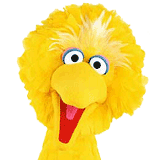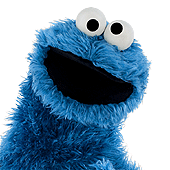BigBirdABCDEFGH
Well-Known Member
- Joined
- Aug 3, 2009
- Messages
- 50
- Reaction score
- 25
Hi,
I have a curious question about both the target age gap (the people watching the show at home) and the age gap of the children (aside from the regularly-appearing kid stars, such as Miles) who participate on each and every episode of Sesame Street through the years: is it true that much of the children who participate within SS's each and every skit (footage within Elmo's World, for example including the "Music" episode where one piece of footage shows various children doing their rounds of the "Alphabet Soup/Twinkle, Twinkle Little Star/Baa Baa, Black Sheep" melody, including one person on piano, another on violin, a group of children on recorders, another group of children on kazoos, yet another group of children humming "la, la, la," and finally a young orchestra doing the final measure) are usually aged between 5 and 12 years old (between kindergarten and grade 6)?
If that's the case, then for example: theoretically, for their part in the 1998-99 season, all the children participating on the show would have had to meet these eligibility requirements:
*Kindergarten students must have approached their 5th birthday prior to 11/1/97, one year before the 1998-99 season shows have aired. Their dates of birth would have ranged between 11/2/91 and 11/1/92.
*Sixth-grade students must have approached their 11th birthday prior to 11/1/97, for reasons stated previously. Their dates of birth in this case would range between 11/2/85 and 11/1/86.
~Ben
I have a curious question about both the target age gap (the people watching the show at home) and the age gap of the children (aside from the regularly-appearing kid stars, such as Miles) who participate on each and every episode of Sesame Street through the years: is it true that much of the children who participate within SS's each and every skit (footage within Elmo's World, for example including the "Music" episode where one piece of footage shows various children doing their rounds of the "Alphabet Soup/Twinkle, Twinkle Little Star/Baa Baa, Black Sheep" melody, including one person on piano, another on violin, a group of children on recorders, another group of children on kazoos, yet another group of children humming "la, la, la," and finally a young orchestra doing the final measure) are usually aged between 5 and 12 years old (between kindergarten and grade 6)?
If that's the case, then for example: theoretically, for their part in the 1998-99 season, all the children participating on the show would have had to meet these eligibility requirements:
*Kindergarten students must have approached their 5th birthday prior to 11/1/97, one year before the 1998-99 season shows have aired. Their dates of birth would have ranged between 11/2/91 and 11/1/92.
*Sixth-grade students must have approached their 11th birthday prior to 11/1/97, for reasons stated previously. Their dates of birth in this case would range between 11/2/85 and 11/1/86.
~Ben

 Welcome to the Muppet Central Forum!
Welcome to the Muppet Central Forum!.jpg) Christmas Music
Christmas Music Macy's Thanksgiving Parade
Macy's Thanksgiving Parade Sesame Street debuts on Netflix
Sesame Street debuts on Netflix Back to the Rock Season 2
Back to the Rock Season 2 Sam and Friends Book
Sam and Friends Book Jim Henson Idea Man
Jim Henson Idea Man Bear arrives on Disney+
Bear arrives on Disney+